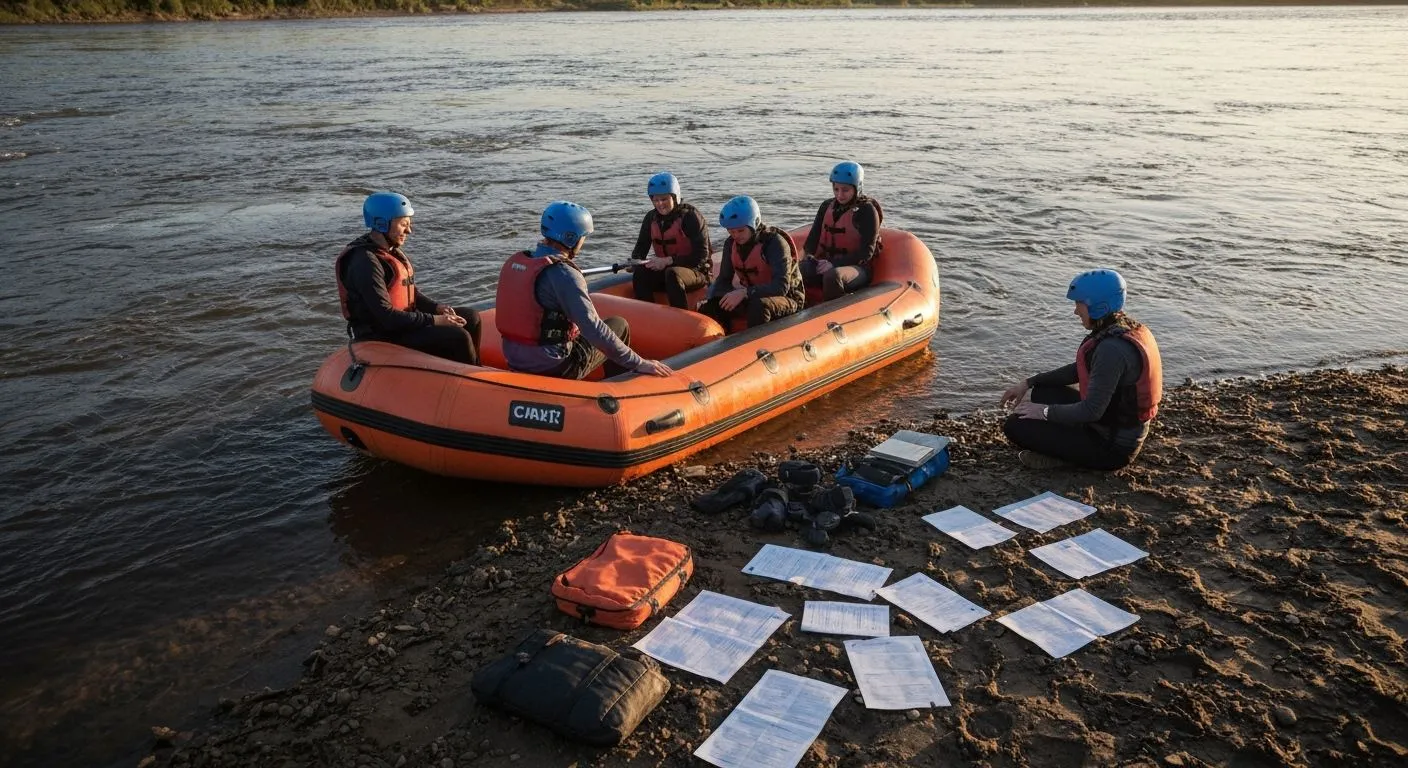Reaching the far bank¶

You have crossed the river (domonstrated compliance). Security measures are implemented, tested, and operational. Unlike climbing a mountain, where you plant a flag at the summit, NIS2 compliance is demonstrated through ongoing evidence and verified through supervisory oversight. There is no certificate ceremony; compliance is operational reality.
Organise your documentation¶
Your ISMS framework provides the foundation:
Board-approved information security policy
Risk assessment methodology and current results
Risk treatment plan showing how identified risks are addressed
Statement of Applicability mapping controls to NIS2 requirements
Policies and procedures covering all mandatory measures in operational detail
Governance evidence demonstrates board accountability:
Meeting minutes showing security oversight and decisions
Management training records
Organisational charts with clear security responsibilities
Budget allocations showing resource commitment to security
Technical evidence demonstrates that controls actually work:
System inventories and network diagrams
Evidence of security control implementation from audits and assessments
Configuration documentation for critical systems
Vulnerability scan results with remediation tracking
Penetration test reports
Patch management logs showing timely updates
Operational evidence shows daily practice:
Incident logs with response and resolution details
Business continuity test results
Backup and recovery test logs
Security awareness training completion and test results
Access reviews and audit trails
Supply chain evidence addresses third-party risk:
Supplier assessments and risk classifications
Contractual security requirements in place
Supplier monitoring records
Documentation for alternative suppliers
Incident reporting records demonstrate regulatory compliance:
Submitted notifications to authorities with timestamps
Internal incident reports with detailed analysis
Post-incident reviews and lessons learned
Corrective actions implemented after incidents
Prepare for supervisory interactions¶
Some member states require registration with supervisory authorities. Organisations should check national implementation for registration deadlines, required information, update procedures, and any fees. Register promptly to avoid penalties for procedural non-compliance.
Supervisory authorities may conduct inspections and audits:
On-site inspections of facilities and systems
Requests for documentation and evidence
Personnel interviews to verify understanding
System access with appropriate safeguards
Issuance of recommendations or corrective actions
Respond professionally:
Designate a point of contact for authority communications
Establish internal response procedures
Maintain organised evidence for rapid access
Respond within required timeframes
Be transparent about challenges or gaps rather than hiding problems
Treat supervisory interactions as collaborative:
Seek guidance when uncertain
Report challenges honestly
Demonstrate good faith efforts
Show continuous improvement over time
Participate in sector forums and information sharing
Demonstrate proportionality in practice¶
NIS2 requires “appropriate and proportionate” measures. Be prepared to explain:
Why measures are appropriate: alignment with specific risks, sector best practices, mandatory requirements, and where you have gone beyond minimum standards
Why measures are proportionate: consideration of organisation size, available resources, service criticality, potential impact, likelihood and severity of risks, cost-benefit analysis, and alternative controls where standard approaches are not feasible
Understand enforcement and penalties¶
NIS2 includes significant penalties for non-compliance:
Essential entities may face up to €10 million or 2 per cent of total worldwide annual turnover, whichever is higher
Important entities may face up to €7 million or 1.4 per cent of total worldwide annual turnover, whichever is higher
Management liability adds personal consequences. Management bodies can be held personally liable for:
Failure to approve security measures
Failure to oversee implementation adequately
Inadequate training or participation in security governance
Gross negligence in security responsibilities
Factors affecting penalties include severity and duration of non-compliance, intentionality or negligence, level of cooperation with authorities, prior infringements, and mitigation actions taken after incidents.
Self-assess before claiming compliance¶
Run through a checklist honestly. Example:
All mandatory measures from Article 21 implemented and operational
Board approval and active oversight of security measures
Risk assessment completed, documented, and current
Incident detection and response capabilities tested and working
Incident reporting procedures established with successful test notifications
Supply chain security programme implemented with supplier assessments
Business continuity plans documented and tested successfully
Security awareness training deployed with completion tracking
All evidence organised and accessible for audit
Supervisory authority registration completed where required
Regular review cycles established and functioning
If any item cannot be checked, document the reason and the plan to address it. Proportionality may justify some gaps, but reasoning must be clear.
Output¶
The output of this stage is a compliance evidence package organised logically, supervisory authority registration confirmation where required, audit-ready documentation, and a self-assessment report showing an honest evaluation of compliance status.